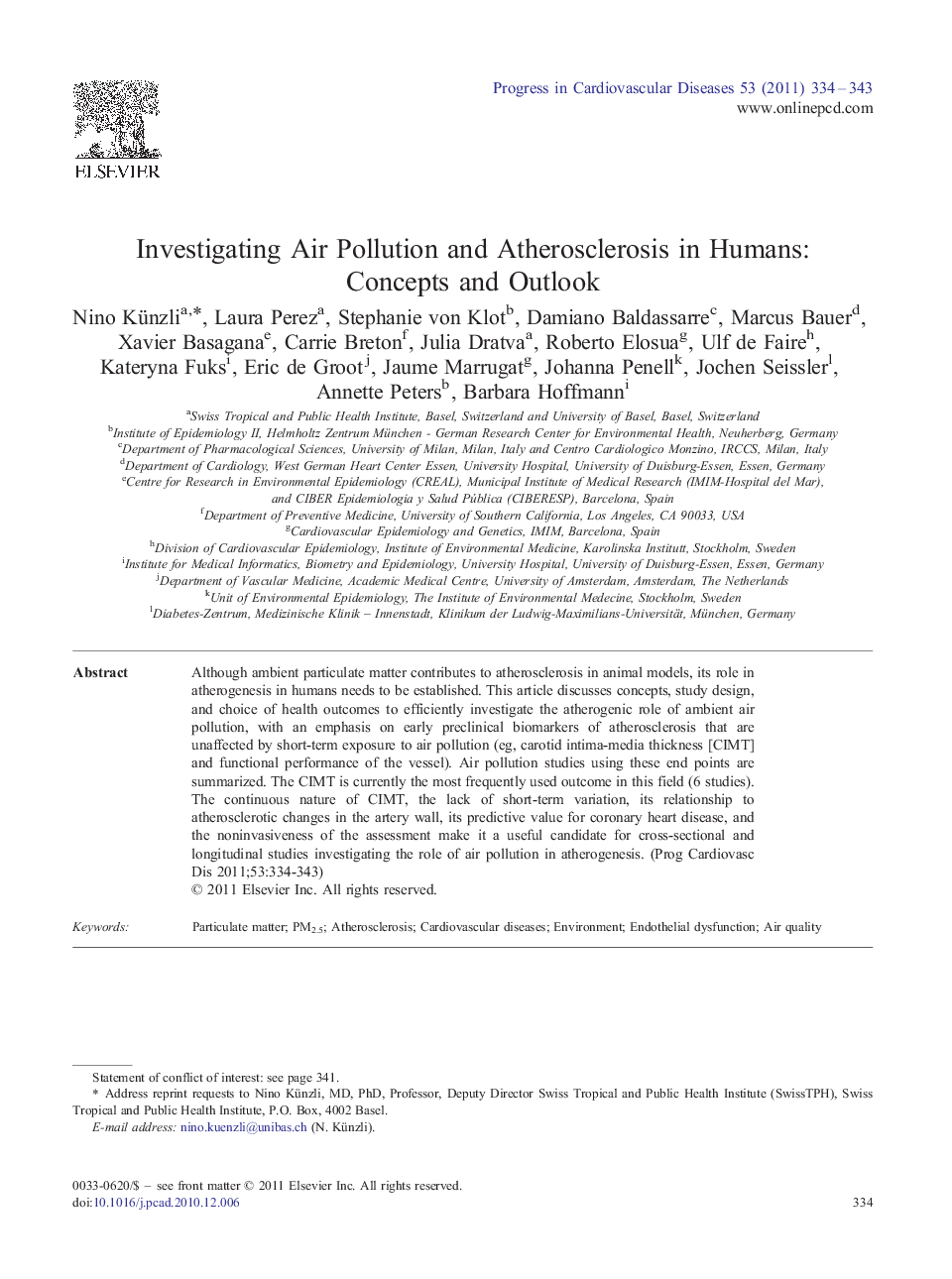| Article ID | Journal | Published Year | Pages | File Type |
|---|---|---|---|---|
| 5997007 | Progress in Cardiovascular Diseases | 2011 | 10 Pages |
Abstract
Although ambient particulate matter contributes to atherosclerosis in animal models, its role in atherogenesis in humans needs to be established. This article discusses concepts, study design, and choice of health outcomes to efficiently investigate the atherogenic role of ambient air pollution, with an emphasis on early preclinical biomarkers of atherosclerosis that are unaffected by short-term exposure to air pollution (eg, carotid intima-media thickness [CIMT] and functional performance of the vessel). Air pollution studies using these end points are summarized. The CIMT is currently the most frequently used outcome in this field (6 studies). The continuous nature of CIMT, the lack of short-term variation, its relationship to atherosclerotic changes in the artery wall, its predictive value for coronary heart disease, and the noninvasiveness of the assessment make it a useful candidate for cross-sectional and longitudinal studies investigating the role of air pollution in atherogenesis.
Related Topics
Health Sciences
Medicine and Dentistry
Cardiology and Cardiovascular Medicine
Authors
Nino Künzli, Laura Perez, Stephanie von Klot, Damiano Baldassarre, Marcus Bauer, Xavier Basagana, Carrie Breton, Julia Dratva, Roberto Elosua, Ulf de Faire, Kateryna Fuks, Eric de Groot, Jaume Marrugat, Johanna Penell, Jochen Seissler, Annette Peters,
